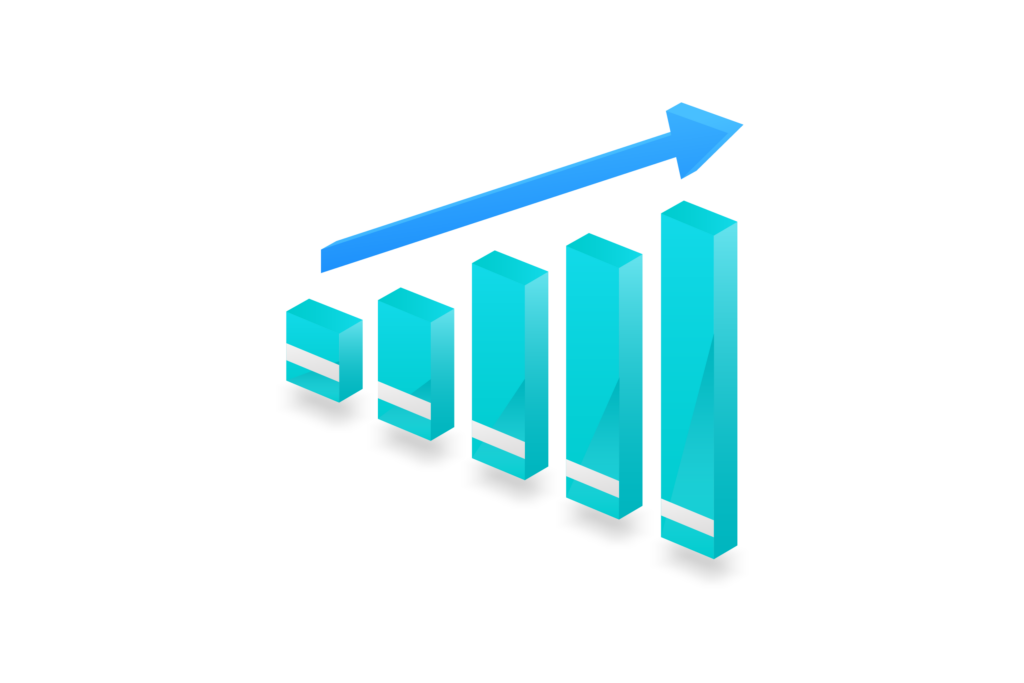The term “petrodollar” has been buzzing around economic circles for decades, but what exactly does it entail? The petrodollar is more than just a currency; it’s a pivotal element in the world of international finance and geopolitics.
Understanding the petrodollar involves delving into the intricate dynamics of the global oil trade, monetary policy, and geopolitical alliances. In this article, we’ll unravel the mysteries behind the petrodollar, exploring its origins, significance, and implications for the global economy.
Table of Contents
ToggleWhat is the Petrodollar?

The petrodollar, an intricate facet of the global economic architecture, epitomizes the intricate interplay between oil-producing nations and the world’s predominant reserve currency, the U.S. dollar. Emerging in the early 1970s, the petrodollar system materialized following agreements between the United States and oil-rich nations, notably Saudi Arabia, to denominate oil exclusively in U.S. dollars.
This landmark accord not only anchored the dollar as the primary medium for international oil transactions but also engendered a perpetual demand for the currency, thereby cementing its hegemony in global trade. The ramifications of this arrangement reverberate across geopolitical landscapes, underpinning American economic dominance and exerting significant influence over monetary policy decisions worldwide.
At its essence, the petrodollar system intertwines economic and geopolitical realms, affording the United States unparalleled leverage in shaping international affairs. By monopolizing the pricing of oil in dollars, the U.S. solidifies its economic standing and fortifies its strategic interests. This intricate web of interconnectedness extends beyond mere economic transactions, permeating diplomatic negotiations, military engagements, and regional alliances. As such, the petrodollar emerges as not just a monetary construct but a cornerstone of contemporary global geopolitics.
Over the decades, the petrodollar system has evolved in tandem with geopolitical shifts, technological advancements, and economic transformations. Its resilience in the face of geopolitical upheavals, such as conflicts in the Middle East or fluctuations in oil prices, underscores its enduring significance. Yet, the petrodollar’s dominance faces challenges from alternative energy sources, shifting geopolitical dynamics, and emerging economic powers seeking to diversify away from dollar dependence. Understanding the nuances of the petrodollar entails navigating complex webs of economic, political, and social dynamics, offering insights into the intricacies of the modern global economy and the forces shaping its trajectory.
The Evolution of the Petrodollar

The petrodollar, a cornerstone of the global financial system, has wielded profound influence since its inception in the 1970s. Anchored by agreements between major oil-producing nations and the United States, the petrodollar system revolutionized the dynamics of international trade and geopolitical power. Here, we delve into the evolution, significance, and future prospects of the petrodollar through six key milestones:
1. Emergence of the Petrodollar System
The petrodollar system emerged in the early 1970s as a pivotal response to the economic challenges faced by the United States. With the decline of the gold standard and the onset of stagflation, American policymakers sought innovative solutions to stabilize the economy and bolster the U.S. dollar’s global standing.
Negotiations with major oil-producing nations led to agreements to denominate oil transactions exclusively in U.S. dollars, laying the foundation for the petrodollar system. This landmark development fundamentally transformed the dynamics of global finance, solidifying the U.S. dollar’s role as the world’s primary reserve currency and reshaping the international monetary system.
2. Consolidation of Dollar Hegemony
The evolution of the petrodollar system coincided with a period of unparalleled American economic and geopolitical dominance. By securing agreements with key oil-exporting countries, particularly Saudi Arabia, the United States effectively established the dollar as the preferred currency for oil transactions.
This consolidation of dollar hegemony not only reinforced America’s economic supremacy but also afforded the nation significant geopolitical leverage. With control over the petrodollar system, the United States wielded immense influence over global energy markets and forged strategic alliances to advance its foreign policy objectives.
Also Read: The Challenges and Considerations of World Bridge Currency
3. Geopolitical Significance
The petrodollar’s geopolitical significance extends far beyond its role in facilitating oil transactions. It serves as a potent tool for projecting American power and influence on the world stage. By anchoring the global oil trade to the U.S. dollar, the petrodollar system enables the United States to exert control over the flow of oil and leverage this control to shape geopolitical outcomes.
Moreover, the petrodollar’s prominence reinforces the dollar’s status as the world’s primary reserve currency, providing the United States with unparalleled economic advantages and cementing its position as a preeminent global superpower.
4. Adaptation to Changing Dynamics
Over the decades, the petrodollar system has demonstrated remarkable resilience in the face of evolving geopolitical, economic, and technological realities. Despite periodic challenges, including the 1970s oil crisis, the rise of alternative energy sources, and geopolitical tensions in regions like the Middle East, the petrodollar has remained a linchpin of the global financial architecture.
Its adaptability and enduring relevance underscore the intricate interplay between energy markets, geopolitics, and international finance in shaping the modern world order.
5. Challenges and Resilience
While the petrodollar system has weathered numerous challenges, it is not immune to criticism and scrutiny. Critics argue that the system perpetuates American hegemony, exacerbates global inequality, and leaves smaller nations vulnerable to economic coercion.
Moreover, the emergence of cryptocurrencies and decentralized finance poses new challenges to the petrodollar’s dominance, prompting calls for reform and diversification in global monetary arrangements. However, despite these challenges, the petrodollar system has proven remarkably resilient, adapting to changing dynamics and maintaining its central role in the global economy.
6. Future Prospects
Looking ahead, the future of the petrodollar remains uncertain amidst ongoing shifts in energy markets, geopolitical tensions, and technological innovations. While some foresee continued dominance for the foreseeable future, others predict a gradual erosion of the petrodollar’s hegemony as renewable energy sources gain traction and geopolitical dynamics evolve.
Regardless of the outcome, the petrodollar’s trajectory will undoubtedly shape the contours of the global economy and influence the geopolitical landscape for years to come. As such, understanding the nuances of the petrodollar system is essential for navigating the complexities of modern finance and geopolitics.
The Significance of the Petrodollar

The significance of the petrodollar reverberates across the realms of geopolitics, economics, and global finance, serving as a linchpin in the intricate web of international trade and monetary policy. At its core, the petrodollar represents the symbiotic relationship between oil-producing nations and major economies, underpinned by the pivotal role of the US dollar as the dominant reserve currency for oil transactions. This arrangement confers immense influence and power upon the United States, enabling it to wield economic leverage and geopolitical clout on the world stage.
Furthermore, the petrodollar system facilitates liquidity and stability in global financial markets, providing a reliable medium of exchange for oil transactions and fostering confidence in the stability of the international monetary system. Moreover, the petrodollar’s significance extends beyond the realm of economics, shaping diplomatic relations, strategic alliances, and geopolitical dynamics as nations jockey for control over vital energy resources and seek to safeguard their economic interests. In essence, the petrodollar stands as a testament to the interconnectedness of the global economy and the enduring influence of fossil fuels on the geopolitical landscape, underscoring its profound implications for the trajectory of international relations and the future of global finance.
Challenges and Alternatives to the Petrodollar
Amidst the complex landscape of global finance, the term “petrodollar” stands as a pivotal concept in the realm of international trade and economics. The petrodollar refers to the system where oil-exporting countries price their oil in U.S. dollars, creating a symbiotic relationship between oil and the dollar. However, this system is not without its challenges and alternatives. Let’s delve into some of the key issues and emerging trends surrounding the petrodollar:
1. Economic Vulnerabilities
The petrodollar’s dependency on oil prices and the stability of oil-producing nations exposes it to economic vulnerabilities. Fluctuations in oil prices or geopolitical tensions can disrupt the petrodollar system, leading to instability in global financial markets. Furthermore, the intricate link between oil prices and the value of the U.S. dollar can create challenges for countries whose economies rely heavily on oil exports. In times of economic uncertainty or oil market volatility, these nations may face difficulties in managing their currencies and maintaining stable economic conditions.
2. Geopolitical Tensions
The petrodollar’s association with U.S. foreign policy and geopolitical interests has led to tensions with oil-producing nations and other global powers. Some countries seek to reduce their reliance on the petrodollar to mitigate geopolitical risks and assert their sovereignty in international relations. Additionally, the dominance of the petrodollar has been a point of contention in diplomatic relations, with some nations viewing it as a tool of American hegemony and advocating for a multipolar currency system to enhance global economic stability.
3. Emergence of Digital Currencies
The rise of digital currencies, such as Bitcoin and central bank digital currencies (CBDCs), presents alternatives to the petrodollar. These digital assets offer decentralized and potentially more efficient means of conducting cross-border transactions, challenging the dominance of traditional fiat currencies in global trade. Moreover, the transparency, security, and accessibility of digital currencies appeal to users seeking to bypass intermediaries and reduce transaction costs, thereby posing a disruptive force to the petrodollar’s hegemony in international finance.
4. Shifts in Energy Markets
Technological advancements and growing concerns about climate change are reshaping global energy markets. The increasing adoption of renewable energy sources and the transition away from fossil fuels could diminish the petrodollar’s relevance over time, as the demand for oil-based transactions declines. Furthermore, initiatives aimed at promoting sustainable development and reducing carbon emissions may incentivize countries to diversify their energy sources and explore alternative fuels, further challenging the petrodollar’s dominance in the energy trade.
5. Calls for Diversification
Amidst concerns about the petrodollar’s stability and geopolitical implications, there are calls for diversifying global reserve currencies and exploring alternative trading mechanisms. Some advocate for the use of a basket of currencies or the creation of regional trading blocs to reduce dependency on the petrodollar and promote financial stability. Additionally, the increasing interconnectedness of global financial markets underscores the importance of developing resilient and diversified currency systems to mitigate systemic risks and enhance economic resilience in the face of geopolitical tensions and economic uncertainties.
The Future of the Petrodollar
As we peer into the horizon of global economic dynamics, the trajectory of the petrodollar unfurls with both intrigue and uncertainty, poised at the crossroads of tradition and innovation. The future of the petrodollar hinges on a multitude of factors, ranging from geopolitical shifts to technological advancements, each contributing to a complex tapestry of possibilities and potential disruptions. With the rise of renewable energy sources and the growing momentum towards sustainability, questions loom regarding the long-term viability of fossil fuels and their role in the petrodollar system.
Also Read: How to Make Money Online in 2024
Moreover, the emergence of digital currencies, blockchain technology, and decentralized finance presents a paradigm shift in the monetary landscape, challenging the supremacy of traditional fiat currencies and the petrodollar’s hegemony. Additionally, geopolitical tensions, regional conflicts, and diplomatic alliances play a pivotal role in shaping the geopolitical landscape and the petrodollar’s future trajectory, as nations navigate a delicate balance between cooperation and competition in the pursuit of economic supremacy.
Furthermore, the COVID-19 pandemic has underscored vulnerabilities in global supply chains and economic resilience, prompting renewed discussions on diversification and resilience in the face of unforeseen disruptions. As we embark on this journey into the unknown, the petrodollar stands as a symbol of both continuity and change, reflecting the evolving dynamics of global finance and the inexorable march towards an uncertain future.
Conclusion
In conclusion, the petrodollar has played a central role in shaping the global economy and financial markets since its inception. However, its continued relevance faces challenges from various quarters, including technological innovation, geopolitical shifts, and changing energy dynamics.
While the petrodollar’s future remains uncertain, its impact on the global economy underscores the interconnectedness of energy markets, monetary policy, and geopolitical relations in the modern world. As we navigate these complexities, understanding the petrodollar and its implications is essential for policymakers, investors, and citizens alike.
Disclaimer: The information provided by Utrada in this article is intended for general informational purposes and does not reflect the company’s opinion. It is not intended as investment advice or recommendations. Readers are strongly advised to conduct their own thorough research and consult with a qualified financial advisor before making any financial decisions.
Kris Lavina
My name is Kris Lavina, and I am deeply engaged in the realm of cryptocurrencies as both a trader and a writer. My journey has been marked by a commitment to delve into the intricate world of digital currencies, using my knowledge to offer meaningful guidance and analyses. As a writer, my goal is to deliver educational content that enlightens and supports those endeavoring to understand the multifaceted cryptocurrency environment.
-
Kris Lavina#molongui-disabled-link
-
Kris Lavina#molongui-disabled-link
-
Kris Lavina#molongui-disabled-link
-
Kris Lavina#molongui-disabled-link


